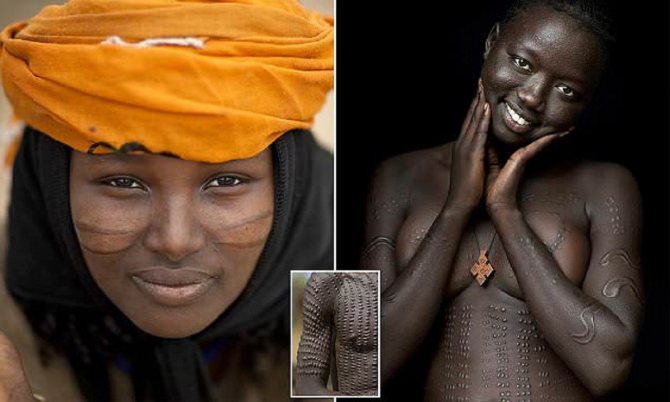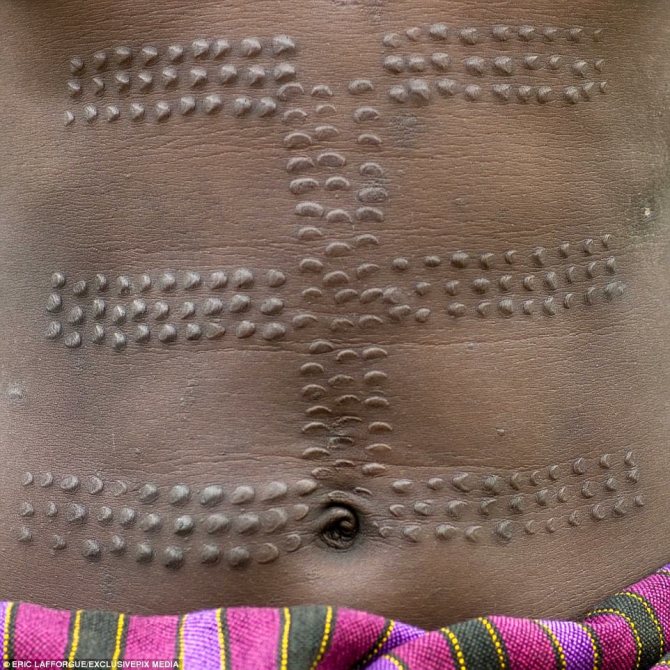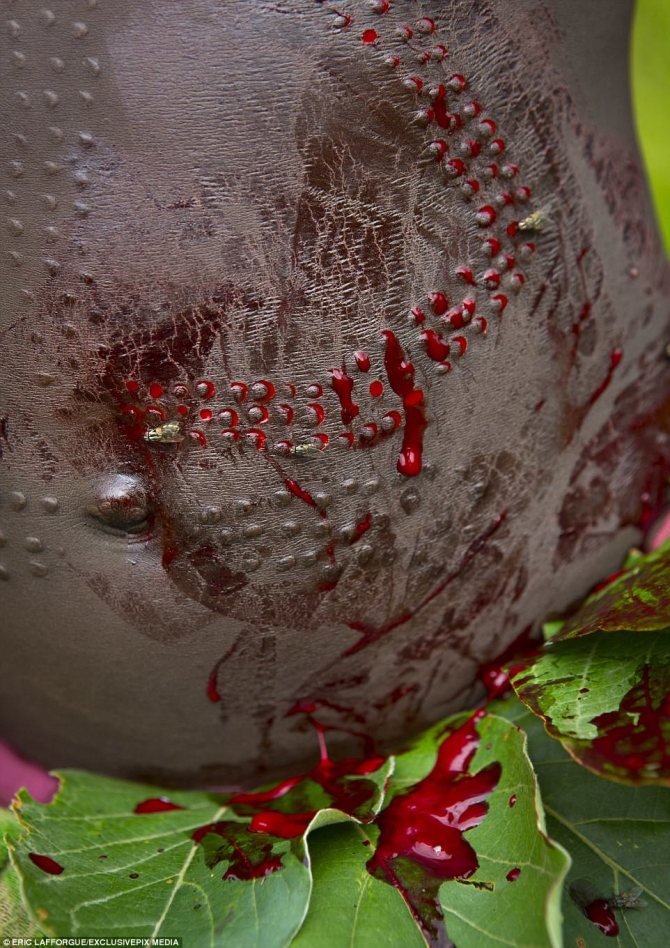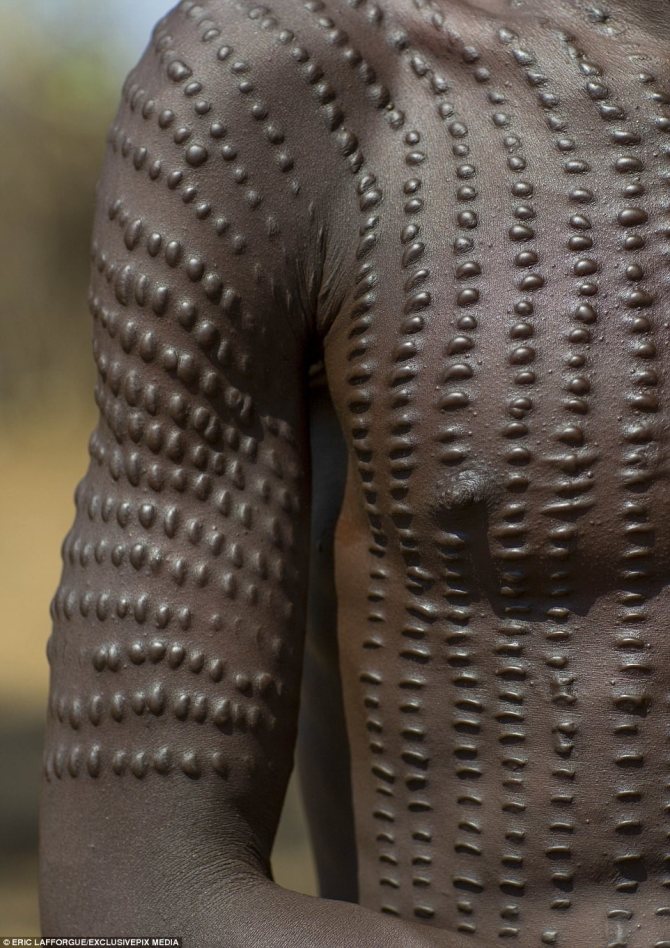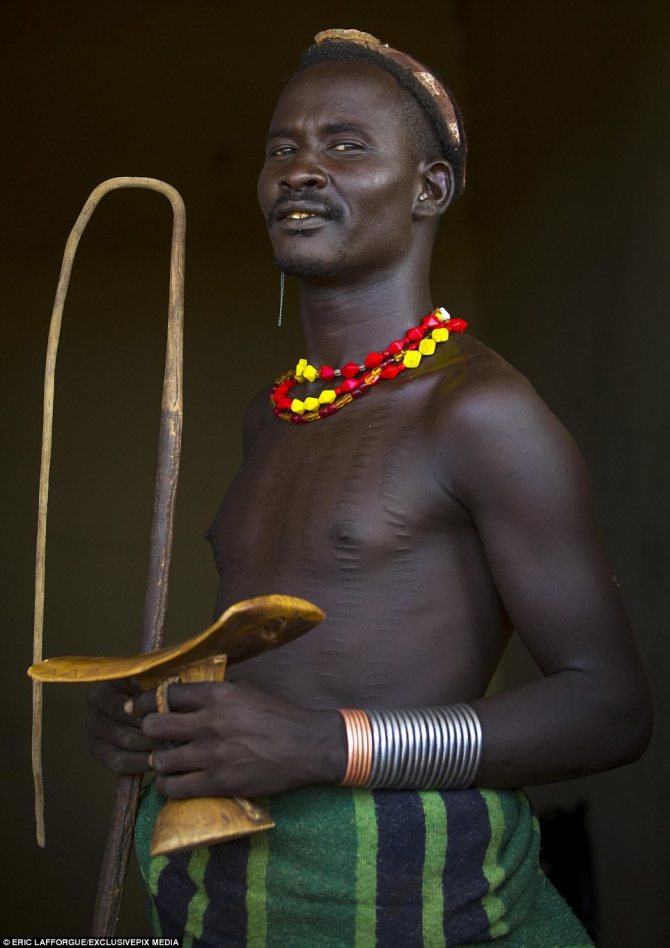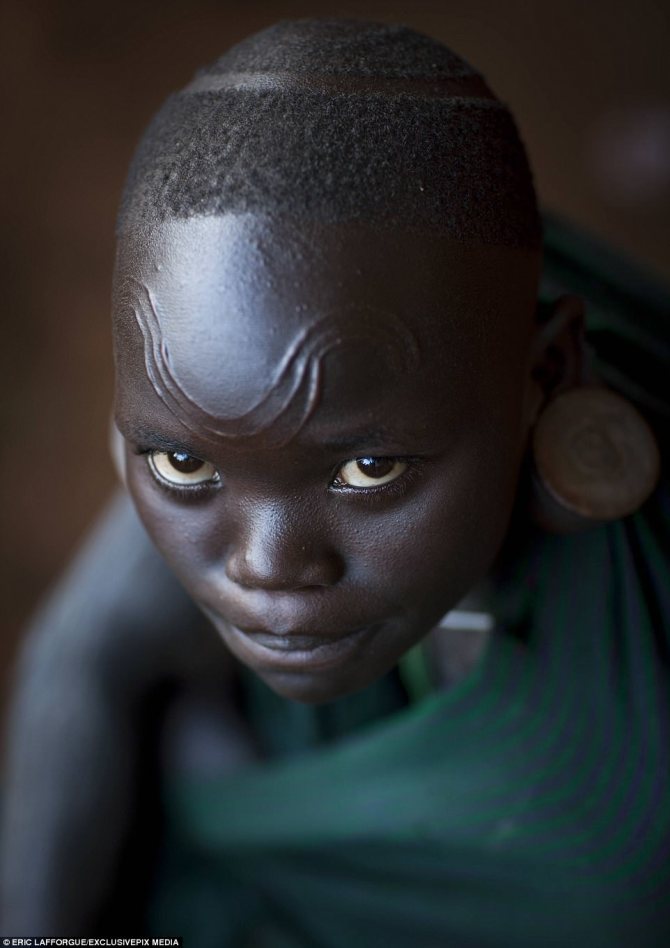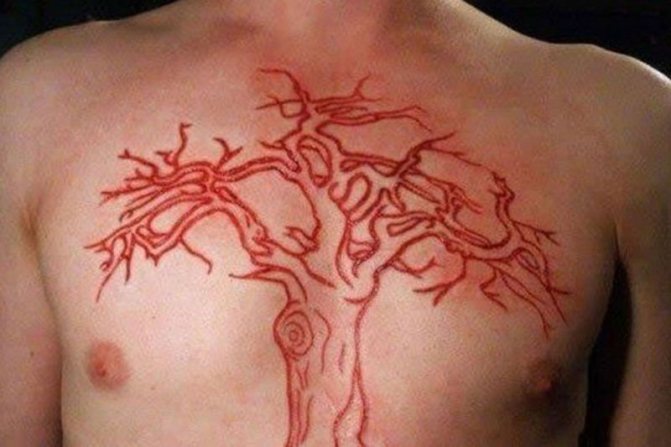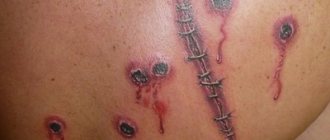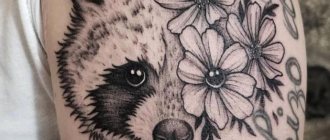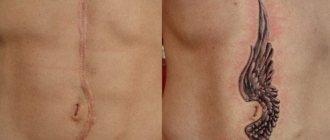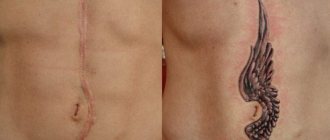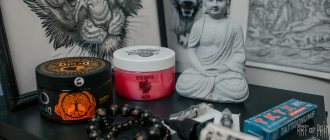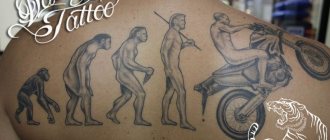Ever since scarification came into vogue, many people began to think about scarring. Scarification or scarification is a trend in bodybuilding that began back in the ancient tribes of South Africa. At that time, scars were not a means of decoration, but rather a way to inform another person. With the help of a scar it was possible to determine which class their bearer belonged to, what was his social status in the tribe. What do scars mean now, and how are they applied to the skin?
When can a scar be overlaid
When a scar appears, as a consequence of something, and there is a thought to cover it with a tattoo, it is necessary to contact a tattoo parlor for advice. It is necessary to take into account the condition of the damaged place. The process of regeneration and healing of the epidermis is always individual.

All people have different bodies, respectively, and the recovery process is different for everyone. It may depend on the immune system and the presence of chronic diseases. It is recommended to wait a year, only then cover the scar with a tattoo. From the state of the tissue in the scar will depend on the feelings in the process of drawing, as well as the clarity of the image.
It should be understood that there will not be the result that the owner expects. Tissues in the area of the scar are heterogeneous, sometimes the pigment can not hold, because of this comes out and the outline of the image is non-uniform. This is why it is necessary to turn to professionals of their craft, who have had the appropriate experience.
The most important thing to consider is not to do a tattoo on a fresh scar, no matter what place of the body it is. The skin will be renewed for a long time. Otherwise, the drawing will distort beyond recognition.


Recommendations:
- Wait for the epidermis to fully heal.
- Choose a professional tattoo artist who has had experience covering scars with a tattoo.
- Find information about the tattoo parlor and read reviews, see photos of work.
What type of scarring is easier to do at home, and which is better to give up?
If you do decide to perform scarification at home and are familiar with the basic rules for its preparation, then refuse the complex techniques of scarification:
- deep cuts in order to obtain an in-depth pattern;
- Volumetric scarification, for which you need to know at what angle you should hold the scalpel.
If you do not observe the angle of the cut, you will get an uneven pattern: in one place it will protrude more, in another - less. That is, it is very difficult to achieve the desired result for those who have not held a scalpel in their hands before.
Also, it is necessary to choose the right place on the body for scarring. It is done where there are no bends or close blood vessels. Scarification is not done in the knee or elbow area, or on the inside of the thigh. It is most often drawn on the forehead, forearm, shin, hands and other areas on the body.
- The easiest thing to do at home is scraping (scratching). By removing the top layer of skin, the desired pattern is obtained. Scratching the outline of the drawing can be done with a needle, a scalpel. You should not make too deep cuts, as there is a risk of catching a nerve or muscle.
- Another type of scarring is performed at home - branding. A stigma is made of a special medical wire in the form of the desired pattern, which is heated in the fire and burned on the skin area. After a certain period of time the place where the stigma is applied heals and a scar remains.
It should be noted that scarification is a very painful and dangerous body modification technology. There is a great risk of getting an infection into the open wound, which will cause festering scars. Before you go for it, weigh the pros and cons, especially if you are going to do scarification at home.
Choosing the sketch
You need to start from the shape of the scar on the skin and its peculiarities. Perhaps the shape of the scar can be used as an element of the tattoo. On the color scheme as it is necessary to focus the attention.
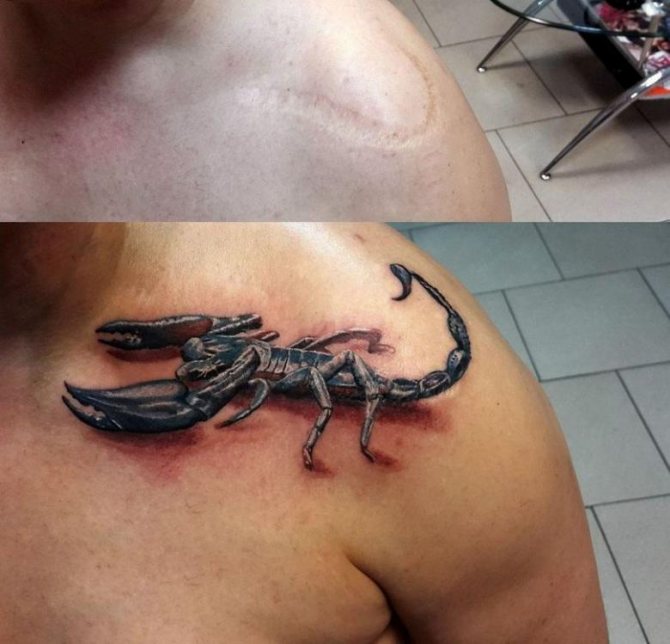

Communication with the tattoo master and adjusting the nuances of the future nail design is important. The result of the work will depend on it. Getting a tattoo on a scar is not difficult, but it is difficult to achieve a quality result.
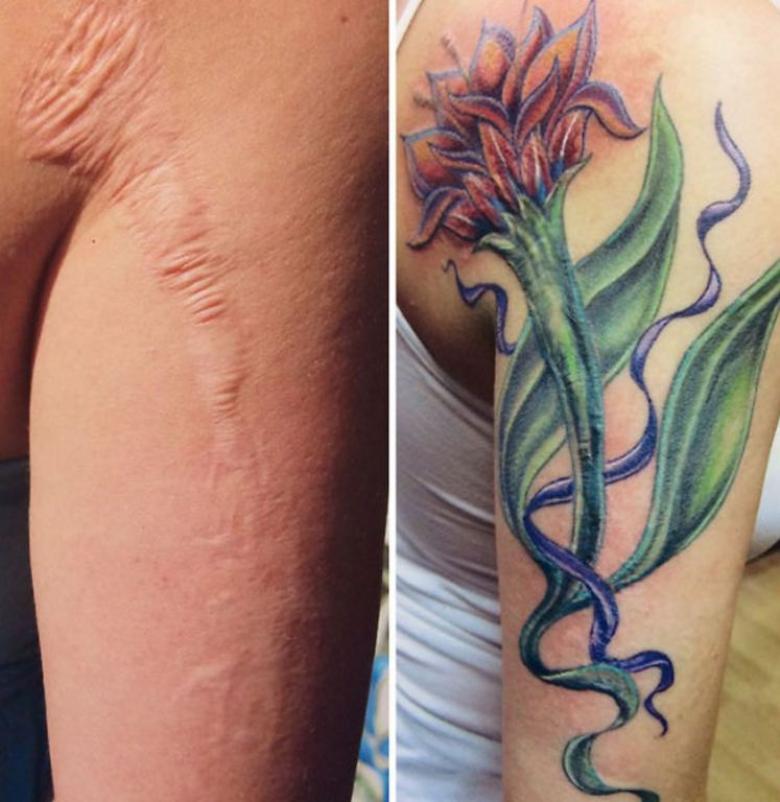

Men like the enhancement of the scar effect. In this case, the scar itself is not overlaid with ink, and retains its original appearance. And already around it or from it comes the composition of the drawing, a variety of elements. An interesting idea, to depict a lightning bolt.
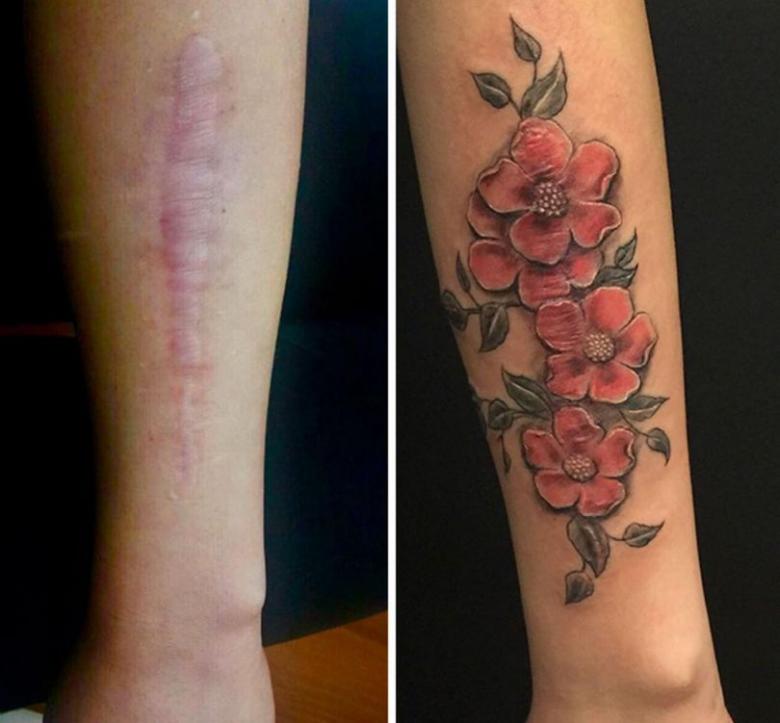

Girls often overlap defects with images:
- Floral or floral elements.
- Insects. Mostly butterflies.
- Birds and animals.
- Symbols and inscriptions.


To cover large skin lesions, it is necessary to apply a large-scale tattoo. Basically, both men and women choose tattoos with large and bright elements in order to divert attention from the state of the skin.
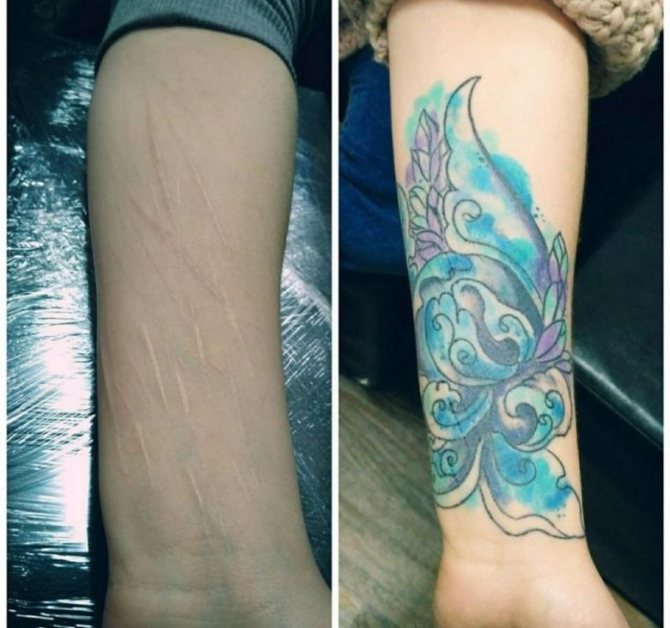

Scarface: How to make fake scars and cuts for Halloween


You can hardly create an original Halloween image with just a costume. The specificity of the holiday requires a full immersion in the terrifying character of the character and there is no way to do without specific makeup. Today we will tell you how to make scars for Halloween - one of the most popular and spectacular elements of the appearance of many monsters and traditional Halloween characters.
Temporary Tattoo
Categorical people who do not accept a permanent image on the body can resort to a temporary henna tattoo. On vacation, this is a great way to hide the scar and not stay with the body art for life. There are advantages to applying a henna image:
- Absolute painlessness.
- Comes off completely in two weeks.
- Does not traumatize the epidermis and scar tissue.


Disadvantages:
- Impermanence.
- Allergic reactions.


Before you make henna images, you need to make sure of the quality of the consumable. It is necessary to check the future owner of a temporary tattoo for an allergic reaction by applying a small amount of henna on the hand. It is necessary to do it in order not to get irreversible changes in the skin and not to worsen the condition of the scarred tissue.
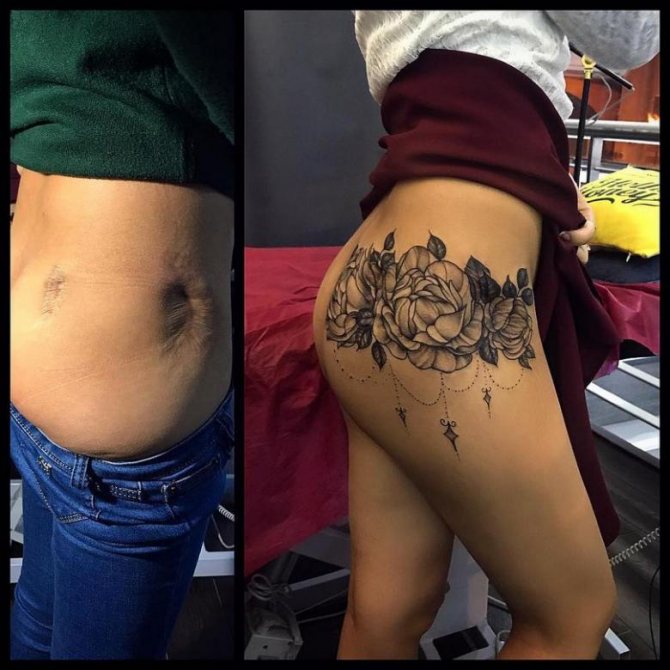

Scarring: what is it and why is it done?
Among ordinary people there are few who have heard the term "scarring" and know what it is. This, rather unique activity, suits more for extreme people who are fond of extravagant transformation of the body. It is one of the most dangerous types of body biomodification. Nowadays, scarification is even more popular than tattoos. Scarification involves the special application of decorative scars to the body that make up the completed composition. Scarification is done in two cases:
- To beautify one's body;
- To disguise existing scars.
Since it is extremely difficult to get rid of the results of scarring later on, the procedure should be approached consciously. For many, it is the marking of an important stage in life or the dedication of significant events.


When deciding on a scarring procedure, you should decide on one:
- The geometry of the location;
- depth of application;
- Health consequences;
- the intended result.
Read about laser biorevitalization here.
Scarring is most characteristic of goths, rockers or a number of other eccentric cultures. It is applied to:
- the head;
- The outside of the forearms and thighs;
- torso.
- geometric patterns;
- Hieroglyphics;
- astrological or occult symbols;
- fantastical images.
Tattooing Locations
Abdomen
Many girls and guys suffer from postoperative scars on the stomach. In this place are concentrated vital organs. Often girls after a cesarean section go to salons for help. There are also many people with scars after an appendix.


Arm
Statistics say that the most common scars are on the hands of young people. Growing up, people realize the absurdity of what was done and want to cover the scars with a tattoo.
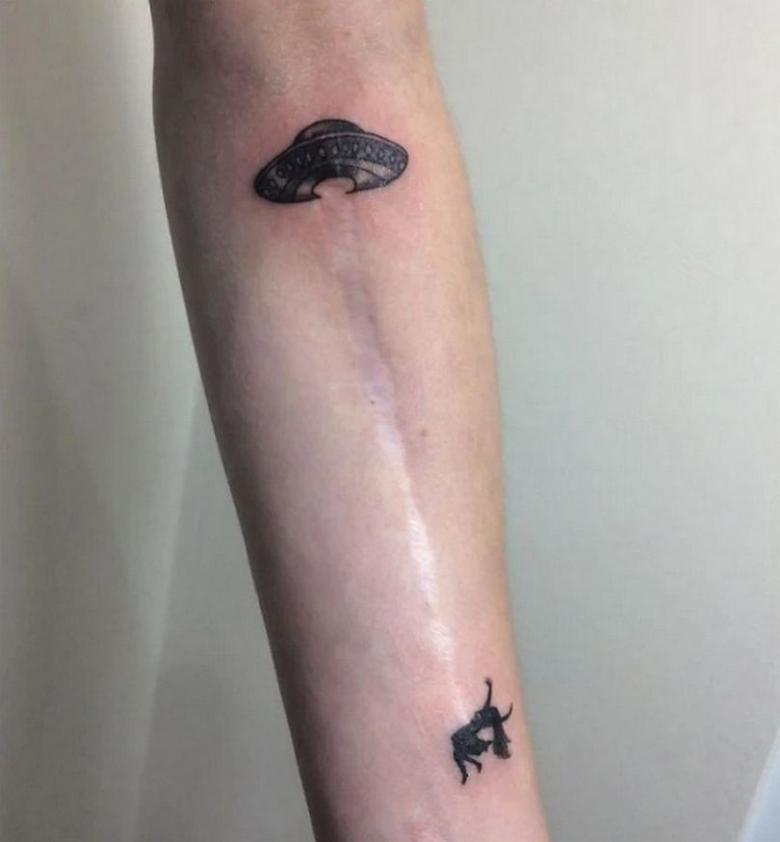

Foot
On the leg, you can score a large-scale tattoo with a story and fill it with a bright color scheme.


Face
Unfortunately, the face is not immune to damage. The approach to the image, which will cover the scar, should be very delicate.


To be sure to hide the blemish on the skin, you need to communicate with the master. Order an individual sketch. A professional, based on the features of the defect and your desires, will be able to develop an image. Will make a tattoo that will not only hide the flaw, but also emphasize the beauty of the owner.


The main function of a scar tattoo is to make the defect invisible. The quality of the image depends on several factors, such as the condition of the epidermis, the time of scarring, the care of the tattoo and the professionalism of the tattoo artist and his qualifications. By following the recommendations, you can achieve the desired effect and get rid of complexes.
Other ways
How to make a scar for a party really impressive? If you have sufficient financial resources, you can simply buy theatrical paraphernalia in a specialized store. As you know, special skin prostheses are used for this purpose in the cinema. You can also buy special wax and sculpt your own, unique and unrepeatable model of the scar. Some prefer the use of gelatin. There are a lot of methods for applying makeup - it is possible that you may wish to invent your own personal version for a friendly party.
Sources:
https://www.allwomens.ru/42468-kak-sdelat-shramy-na-lice.html https://womanskincare.ru/makiyazh/makiyazh-shramy-na-litse-na-hellouin.html https://fb.ru/article/275854/kak-sdelat-shram-na-hellouin-samyie-populyarnyie-metodyi
Taking care of your body after a scarring procedure
After a scarring procedure until the scar is completely scarred, the site of the manipulation should be carefully cared for. First of all, general hygiene must be observed. A sterile dressing should be applied to the wound, which should be changed as needed. Treat the scar site with antiseptic agents. During the first days it is necessary to:
- avoid increased physical activity;
- Do not go to the swimming pool, sauna;
- Not to be exposed to ultraviolet light.
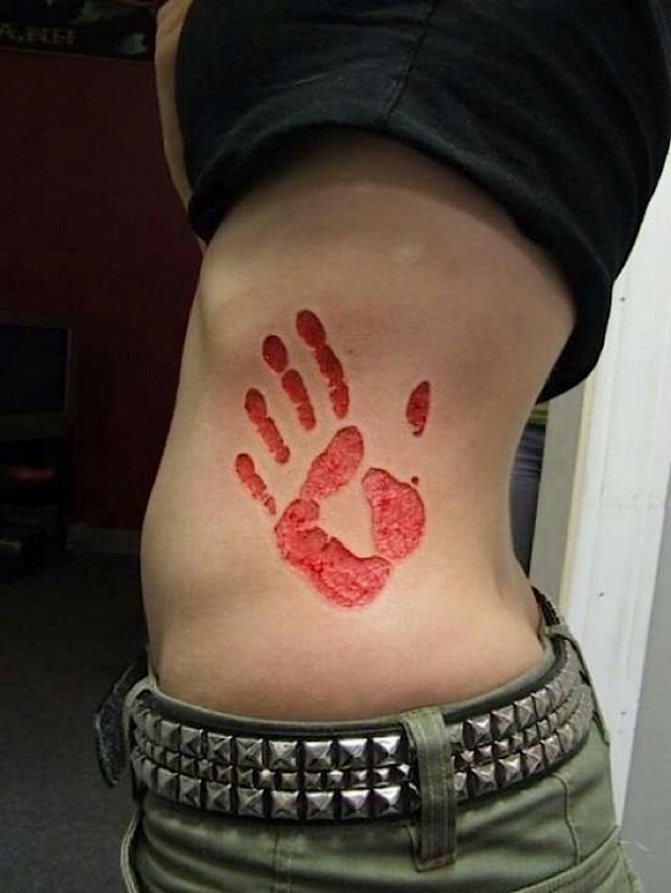

Scarring: photo of the result
The full formation of the scarring pattern ends in about two years. The results of scarring are documented in pictures.
Types of scarring
There are several types of body scarring.
- Cutting - incision or sectioning, that is, scarring with a scalpel. Incisions are made in several ways. Perpendicular to the surface of the skin, to different depths. The pattern is obtained graceful, but little noticeable. At an angle. Thus is made convex scar, to get a three-dimensional image. Cutting off the upper layer of the skin. This is how concave scars are applied, and the pattern is a recess in the body.
- Scorching - is done by applying a special mixture to the body, which is then set on fire. Little controllable procedure, the end result is difficult to guess. The upside is that it is short-lived, the pain is sharp, but quick.
- Brading - Branding, that is, applying a scar or pattern to the body with a red-hot metal object. Branding is the most avant-garde way to modify the body. This procedure involves burning out the two top layers of skin with an incandescent billet up to 900C. Deep burns are left on the manipulation site, which gradually become scarred. Healed stigma looks like a pattern of convex lines, which have a lighter shade compared to healthy skin.
The most complex and responsible procedure is considered scarring on the face, which requires serious preparation, great concentration and constant attention of the master. In such a case, you need to pay special attention to the choice of a specialist. For the face, the first method of scarring is recommended.


Safety precautions: how to prepare for the procedure?
Do not forget that this is a small, but surgical intervention. Here, as with any operation, there is a high probability of infection and large blood loss, especially in such a dangerous place - on the wrist.
Therefore, a day before the procedure:
- Stop taking aspirin;
- Other blood thinning drugs;
- Give up alcohol in any form.
Afterwards, wounds must be cared for carefully and regularly:
- After 3 hours, remove the dressing and let the blood drain for a while;
- Apply a sterile bandage of miramistin or chlorhexidine and treat the skin around the scar with it;
- Be sure to wash your hands before dressing;
- Re-bandage the affected area;
- Crusts can be removed a few days after they have formed. Use an applicative anesthetic for this purpose.
- Avoid swimming pools and saunas until fully recovered. Wear clean, loose-fitting clothing.
No one can say exactly how long the incisions will heal, everything is individual and depends on many circumstances, primarily the abilities of the body itself.
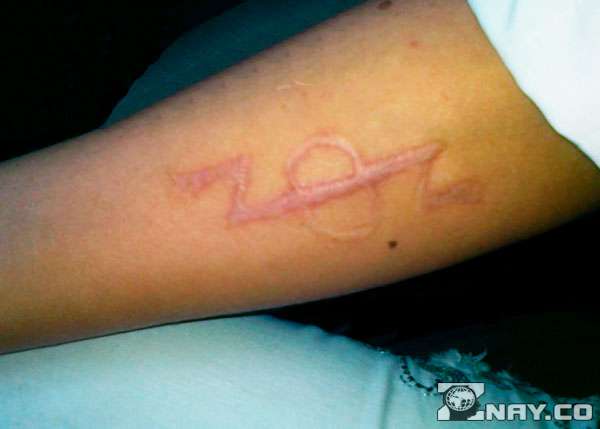

The classic fractional laser resurfacing
For this treatment, dermatologists use a powerful laser that removes scars in the top layer of the skin (epidermis) and the middle layer (dermis).
Laser resurfacing is performed on an outpatient basis in the doctor's office and usually takes one to two hours. To protect the eyes, special goggles are used to protect against the bright glow of the laser. If painful, local anesthesia is administered.
For resurfacing, the CO2 laser is most often used, which is highly powerful, allowing deep penetration into the skin, removing even thick and deep scars. To do this, the dermatologist uses a laser instrument that resembles a wand, which is driven over the scar, removing damaged skin cells. With each pass, scar tissue is removed and the skin is smoothed out.


Photo 1. Fractional laser resurfacing before and after
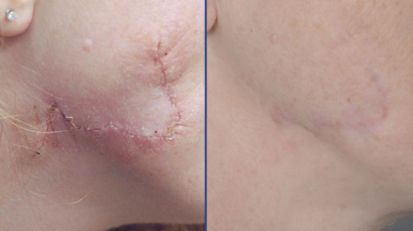

Photo 2. Fractional laser resurfacing before and after
Under laser influence the dense fibers that form the scar are broken down and subsequently replaced by healthier ones. The procedure is done in courses, which must be repeated if the scars are deeper and more pronounced.
Scar classification
- According to the criterion of the volume of the scar-altered tissue: hypertrophic, keloid, normotrophic, atrophic.
- According to the criterion of growth activity, i.e. stages of evolution: "active" (growing), resorbed
и
stable. - According to the age of the scar tissue: "young"
и
"old" scars.
Normotrophic scars
Normotrophic scars are the ideal outcome of healing wounds of any origin. They are thin, pale, do not protrude above the skin surface, do not grow, and are cosmetically and functionally satisfactory for the patient.
Atrophic scars
Atrophic scars recede below the skin and are often the result of injury or inflammation. The skin above atrophic scars is thin, flabby and often has transverse striations. Often these scars lack pigment and therefore appear white.
The characteristic appearance of these scars is due to a defect in the connective tissue beneath the scar, a deficiency of collagen and elastin, the main proteins that form the skeleton of the skin.
They are most commonly found as manifestations of striae and postacne (acne disease, the clinical manifestations of which have an adverse effect on patients, contributing to psychosocial disadaptation.
Hypertrophic scars
Hypertrophic scars are usually thick, dense, with a knobby surface covered with hyperkeratosis, often with transverse fissures. The hypertrophic part of the scars without clear boundaries changes into an atrophic part which gradually merges with the surrounding skin. They NEVER
NEVER spread beyond the injured area.
Keloid scars
Keloid scars are more permanent than hypertrophic scars and are difficult to treat. They are clearly delineated, elevated above the skin, smooth, shiny, elastic in texture, and painful to palpate. Have a sharply pronounced excessive overgrowth of scar tissue, often with bizarre outlines. They form on non-functional areas of the body, after minor trauma or primary tension wound healing, after injections, vaccinations, insect bites, acne.
Such scars almost never ulcerate and always spread to healthy skin!
Qualifications
In 1999 I graduated from the Pirogov Moscow Medical Institute. In 1999, she graduated from N.I. Pirogov Moscow Medical Institute (Russian National Research Medical University), specializing in Pediatrics.
In 1999-2001, she underwent residency at the Pirogov Moscow Medical Institute, specializing in pediatrics. Clinical residency at the Central Research Institute for Cardiovascular Surgery, specializing in dermatovenerology.
In 2001-2003 she was a junior researcher at the Department of Hereditary Skin Diseases at the Central Research Institute of Dermatology and Venereology.
Since 2004 - member of the Eurasian Trichology Association.
Continuing education
In 2008, she completed advanced courses at the Multidisciplinary Educational Center for Further Professional Education "Educational Standard" on the program "Trichology".
In 2010, upgrading of qualification on the basis of "lasers".
In 2012, she was awarded the degree of Candidate of Medical Sciences.
In 2021, she completed an advanced training course at the M.F. Vladimirsky State Medical and Preventive Clinical Hospital in the specialty "Dermatovenerology".
In 2021, she took a professional retraining course in the specialty "Organization of health care and public health" at the Training Center of Additional Professional Education "Educational Standard".
In 2021, a seminar at the Institute of Plastic Surgery and Fundamental Cosmetology "Fundamentals of dermatoscopy. Dermatoscopy in the practice of cosmetology.
In 2021 took part in the IX International Forum of dermatologists and cosmetologists.
In 2021, she completed an advanced training course at the Russian University of Peoples Friendship University specializing in trichology. Diagnosis and treatment of hair diseases.
In 2021, she participated in the course "Internal Control of Quality and Safety of Medical Activity".
Regular participant of thematic professional seminars, forums
